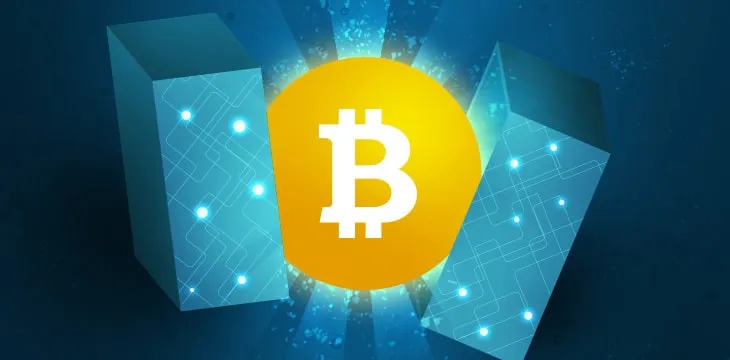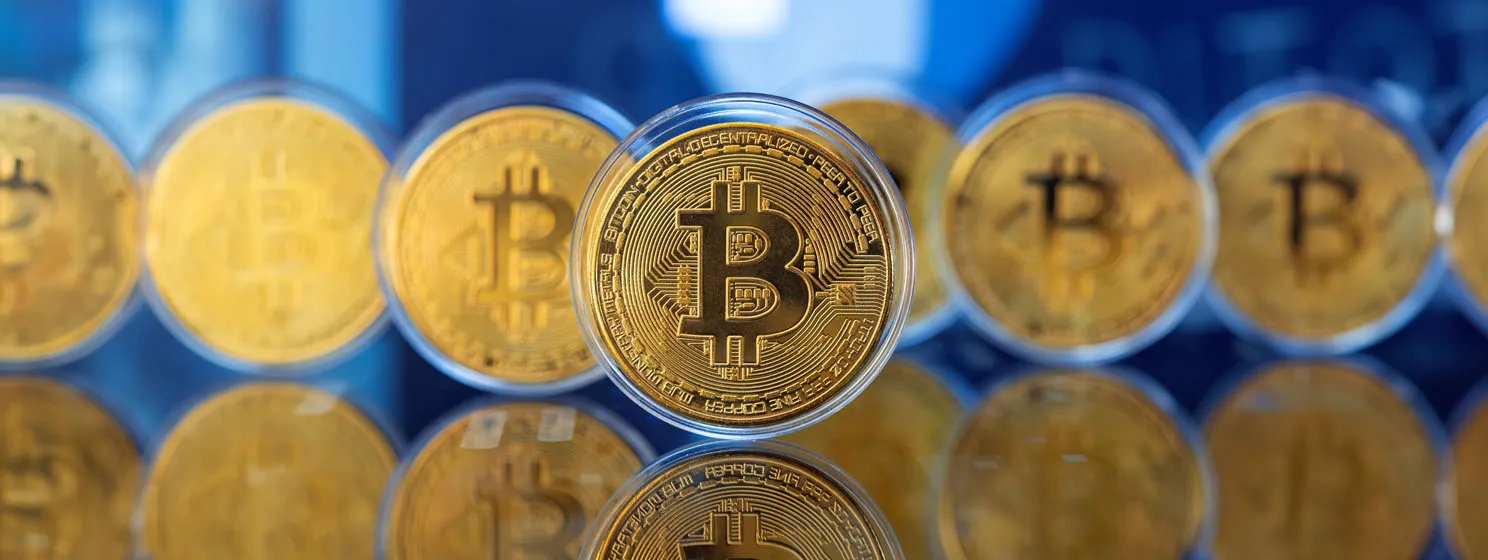|
Getting your Trinity Audio player ready...
|
When Satoshi Nakamoto first conceived Bitcoin and the frameworks that would underpin it, the specifics of the technology itself wasn’t the only area in which he would display his expertise.
Far from it.
In the fundamental design of Bitcoin, Nakamoto demonstrated a superior understanding of macroeconomic theory, building-in economic incentives that could forever sustain a peer-to-peer electronic cash system, where prior efforts to create a digital currency had failed.
Bitcoin’s true genius is its economic incentive model.
In any economy, maintaining control over inflation is key to sustaining its ability to properly function. For fiat currencies, inflation is typically controlled through fiscal policy that dictates the supply of money, with central banks controlling the amount in circulation in response to market forces—injecting more capital to stimulate the economy in times of contraction, or shortening supply to combat inflation.
Bitcoin was designed from the ground up to be a peer-to-peer electronic cash system, where its digital currency and transactions conducted with it should always remain valid. That requires having a protocol “set in stone,” as well as a fixed supply of coins, so that no central bank, protocol developers, or governing authority could change the Bitcoin protocol or the maximum number of coins in the supply.
Thus, Satoshi created Bitcoin with a fixed supply of coins—21 million—all ‘issued’ at the very beginning of Bitcoin’s launch. From that 21 million total supply, coins are distributed into network circulation at a set rate tied to each block’s creation. For each block created, the transaction processor [the miner] who discovers the block is awarded a “block reward” of coins. The block reward consists of two components:
(1) A static subsidy amount – a predetermined number of coins that is distributed from the 21 million total supply. This is how “fresh” coins enter the network’s circulation; and
(2) The fees paid by transaction senders for each transaction collected into the block.
Satoshi recognized that the Bitcoin network would begin with very few transactions in its early life and would need time to expand its transaction usage. Therefore, in Bitcoin’s early years, the winning transaction processor [miner] for each block would earn very little in the transaction fee component of the block reward. To account for that, in early days, the biggest portion of block rewards have been the static subsidy amount of fresh coins distributed with each block to incentivize transaction processors to power the network, bootstrapping the system until such a time when transaction count and associated transaction fees could grow.
Satoshi thus designed the subsidy amount to cut in half every 210,000 blocks—roughly every four years. It began as a 50 Bitcoin subsidy for each block, reduced to 25 in 2013 and to 12.5 in 2016. The next Bitcoin halving is due to occur at block 630000 (today), lowering the subsidy to 6.25 Bitcoin per block.
The subsidy amount for each block comes from the 21 million total supply; this is how the system distributes fresh coins into the network. Because Bitcoin has a fixed supply of coins, the subsidy amount for new blocks will eventually run out, as the system moves ever closer to the distribution of 21 million coins. To ensure a lengthy period for distribution of the full supply, as well as to slow the rate at which fresh coins enter circulation, Satoshi controlled the amount of fresh coins entering circulation by algorithmically tying it to a diminishing-supply curve.
Processing the change
While the subsidy halving may go unnoticed by regular users of Bitcoin, for transaction processors [miners]—those who devote computing power to sustain the network and compete for the right to write transactions to the ledger—the economics of remaining a going concern have the potential to change dramatically.
“Short-term, 2020’s Bitcoin halving will of course mean an immediate reduction in the profitability of transaction processors [miners],” says Jimmy Nguyen, Founding President of Bitcoin Association.
“Long-term however, it is my view that the halving of the block reward’s subsidy amount will reinforce the importance of Satoshi Nakamoto’s original economic design for Bitcoin. Satoshi intended to reduce transaction processors’ reliance on the block subsidy amount over time by replacing that income with more transaction fees.”
With the reduction of the block subsidy amount directly tied to the number of blocks created, Nakamoto’s design implies that as the network matures, the subsidized incentives required to sustain the network would reduce, with a growing volume of transactions (and their associated fees) sufficient to cover the upkeep costs of the underlying infrastructure.
“At the time of 2020’s halving, nearly 90% of all Bitcoins from the total supply of 21 million will have been released into circulation. As the supply of fresh coins to pay transaction processors continues to diminish, it’s evident that the static subsidy component of the block reward was not forever intended to be the primary source of revenue, and that transaction fee revenue had to grow,” explains Nguyen.
“In order for this economic design to work, the blockchain must have the ability to scale to much bigger blocks, so that more and more transactions—and therefore, greater volumes of transaction fees—can be included with each block. The BTC and BCH networks have continued to impose hard limits on the size of the blocks able to be generated—and subsequently the number of transactions able to be processed with each block. Economically, that design just doesn’t work long term.”
For transaction processors, while the number of subsidy coins awarded with each block reduces drastically over time, their break-even point as a business does not. That means that in order to maintain the profitability of the network, the income of transaction processors must grow through increasingly more transaction fees. Transaction fees should however remain very low, so that businesses and consumers will actually use Bitcoin. Therefore, block size and network capacity must scale massively to support the huge transaction capacity needed to award miners with enough transaction fees.
Broadening the base
But when there is a limit on the amount of data—and therefore the number of transactions—able to be written to each block, the fee required to send each transaction must significantly increase as the block subsidy declines if transaction processors are able to remain economically viable. The result is bad for users of the network, as transacting on the BTC Core network becomes progressively more expensive and slower for users.
“Bitcoin Core has restricted its network with an exceptionally small block size. As the block subsidy amount halves, the BTC network will be unable to provide transaction processors with sufficient transaction fees to make up the lost revenue without making each transaction prohibitively expensive to use, and prohibitively slow to send. Users will eventually abandon the BTC network, and so too will the transaction processors,” says Nguyen.
“In essence, the Bitcoin Core protocol developers have crippled their own network to such an extent, that Satoshi’s genius economic incentives designed to make Bitcoin work in the long-term become entirely ineffective.”
This is a problem that only stands to exacerbate as time goes on, with increasingly higher costs of transacting required to meet the shortfall in income provided by a diminishing block subsidy amount.
“The only way that the Bitcoin network will survive long-term is if its blockchain can scale to support massive transaction volume at a low cost,” says Nguyen.
“This is the distinguishing factor for Bitcoin SV, which follows Satoshi’s original design for Bitcoin. There is no default block size limit set by protocol developers who have too much power over the network. BSV has unbounded transaction capacity, which can grow as market forces demand.”
With the only massively scalable blockchain among the competing Bitcoin chains, Bitcoin SV has emphasized the utility of its platform as a core advantage—courting application developers and enterprises who need a stable and high-volume platform, as part of a broader strategy to build an ecosystem backed by the surety of being more than just a digital currency.
“On Bitcoin SV, we are seeing developers create an array of applications which write high volumes of data and transactions to the blockchain. This is exactly what Satoshi always intended for Bitcoin,” explains Nguyen.
“We’re also seeing something new that has not happened before in Bitcoin’s history—precisely because some applications are now generating high volumes of daily transactions. Transaction processors and applications are now directly negotiating with each other on transaction fee rates, rather than just relying on default ‘Satoshi per byte’ of data set in the code. Some mining pools have reached agreements for pre-negotiated transaction fees with applications, providing certainty of price for businesses which expect to generate large transaction volume, and surety of volume for transaction processors. The free market and economic incentives are playing out on Bitcoin SV, just as Satoshi always intended.”
Considering the current climate
The halving of the block subsidy is set to occur in this week (for the BCH and BSV networks) and May 2020 (for BTC), amidst the most turbulent economic environment in Bitcoin’s lifetime due to the global coronavirus pandemic, meaning that external factors have the potential to influence the short-term price of all digital assets in entirely unpredictable ways. But even within the blockchain space, Bitcoin’s third block subsidy halving is set to occur in unique circumstances.
“This is the first time Bitcoin enters a block subsidy halving with more than one competing chain. For past halvings, transaction processors had no choice of competing chain and could only continue mining on BTC,” explains Nguyen.
“Now, there are three main competing Bitcoin chains—BTC, BCH and BSV. After all three undergo their halving within a month of each other, I expect that as a whole, transaction processing will not be profitable enough to sustain all of the existing hash that we currently see across the three networks.”
A decline in hashing power across the three Bitcoin chains will trigger a period of volatility for the three networks, with fluctuating levels of profitability for transaction processors across the three chains.
“Processors will have a choice to switch between the competing BTC, BCH and BSV networks based upon the profitability of each at any given time—which will be affected by the date when each network halves, as well as that chain’s profitability on any given day,” says Nguyen.
“As a result, we will see processing pools switching back and forth, or re-allocating their hash, between competing chains to maximize profitability on any given day. We could also see pools or individual processors decide to shut off some of their rigs because it is not profitable to run them. As a result, I would expect that the total amount of computing power on the combined Bitcoin networks will most likely decrease after the halvings, especially after the BTC halving.”
But while the current halving presents a high degree of uncertainty for Bitcoin processors and pundits alike, Nguyen sees it as something of an inflection point in how Bitcoin is considered and valued—a factor he says will become increasingly prominent in the coming years.
“When the next block reward halving occurs in 2024, with the subsidy for each block dropping from 6.25 to 3.125 coins, the necessity for higher transaction fee revenue will become even more pronounced,” says Nguyen.
“This will shine a light on why the Bitcoin network can only survive long-term with high volumes of transactions and low transaction fees, which are only possible with massive scaling through big blocks and enterprise-level transaction throughput. If it has not already displaced competing chains before then, Bitcoin SV will shine even brighter after the next halving as the only blockchain of choice for transaction processors and profitability.”

 07-04-2025
07-04-2025 





